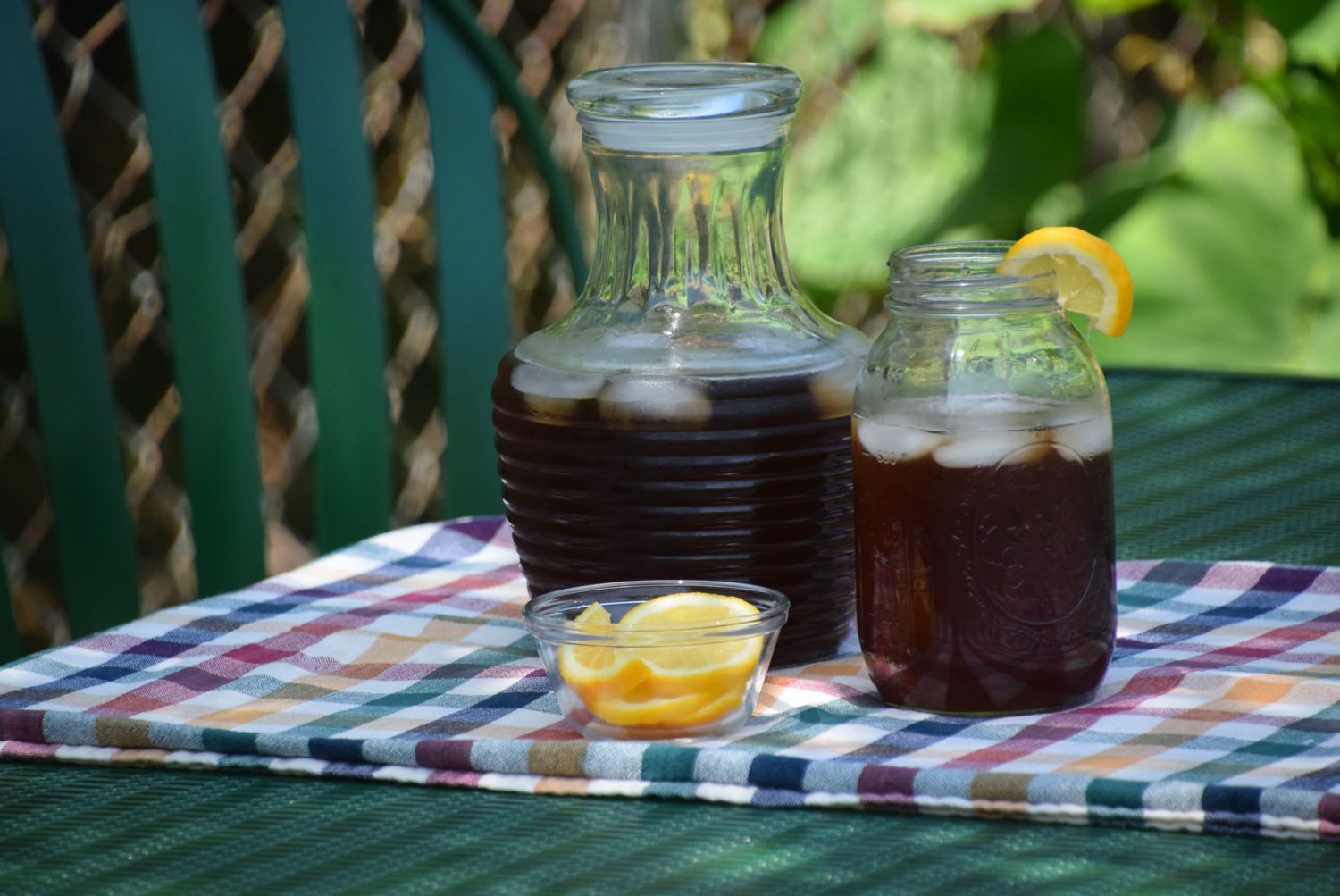
The two most important liquids down South are arguably the water in which you’re baptized and sweet iced tea.
The second evokes as much devotion and emotion as the first. Memorize the prayer that guides the best iced tea makers: “Orange pekoe. Extra sugar. Pure water. Amen.”
Supporter Spotlight
Recite it each time you or someone else decides to make iced tea. Southerners are faithful to those three ingredients and dogmatic as to how they should be blended. Correct brews are strong and sugary, just like folks sipped back home, down South, where National Iced Tea Day June 10 is a time to be thankful for family reunions flowing with sweet ice tea.
“I just remember that there was always iced tea there, every time of day, just about year-round. Even in winter, they never slowed down,” Southport resident Rob O’Briant has told me about life at his grandmother’s old farmhouse in Nash County, near Rocky Mount.
O’Briant, who has been known to drink a gallon of iced tea a day, is loyal to his grandmother’s formula. She steeped orange pekoe in pure-tasting water that had barely reached a boil. While it was still warm, she sweetened the brew with lots of sugar, up to one cup per half gallon, no lemon. That’s about 5 teaspoons of sugar for every tall glass of iced tea.
“It was strong, and it was really sweet,” O’Briant said.
Southern iced tea is so famously sweet that the drink is considered a locator of the true South. You may be in Virginia, but if sweet tea is not on the menu, you’re up North, proponents of this position finder say.
Supporter Spotlight
The Georgia State House of Representatives in 2003, just before April Food’s Day, introduced a bill that stated “Any food service establishment which serves iced tea must serve sweet tea,” and not doing would constitute a “misdemeanor of a high and aggravated nature.”
Why do Southerners love their iced tea so sweet? America is a country founded in part on sugar and tea. Christopher Columbus brought sugar cane cultivation to the Caribbean, and by the mid-1700s it was a cash crop in Louisiana. During Colonial times, world sugar trade was huge. So was tea. The United Kingdom was one of the world’s biggest tea consumers. Colonists brought that taste for tea to young America. Access to sugar meant they could distill molasses into rum, which they used to spike their sugar-laden tea punches.
With access to pond ice frozen over bitter winters, New Englanders could store ice hunks in cool places, providing cubes for tea and punches into warmer months. That kind of ice didn’t exist in the South’s temperate climate. Starting in the early 1800s, the North started shipping ice, but the first nonalcoholic sweet iced tea recipes didn’t show up down South until the late 1800s.
Sweet ice tea got a big boost when it was served during hot summer days at the 1904 World’s Fair in St. Louis. Sixteen years later, Prohibition nixed spiked tea punches. Uplifting, sweet, caffeinated tea became a popular substitute pick-me-up. Much of the tea Americans drank then was green. When World War II cut off supplies of Japanese green tea, the British shipped plenty of black tea from India to the United States.
As black tea became cheaper and home refrigerators and freezers more available, iced tea secured its place on Southern tables.
The ice-tea-making process is easy, but as author John Edgerton said in his encyclopedic (Alfred A. Knoph, 1987), ”… it’s surprising how many brewers of the leaves botch the job.”
“Part of the problem is in the tea itself,” Edgerton wrote, explaining that the loose-leaf orange pekoe favored for Southern iced tea has been replaced at supermarkets with “flow-through” tea bags and all sorts of flavored, blended and herb teas.
Orange pekoe is a grade of black tea denoting the size of tea leaves in a blend. Large, coarse leaves take longer to brew. Orange pekoe is the grade for the smallest leaves that brew more quickly. O’Briant advises home brewers taste-test various orange pekoe teas to determine which one has the best flavor.
Water is another issue. Mineral content and purifying agents can both interfere with tea’s flavor. That’s not to say you can’t make tea as good at O’Briant remembers drinking at this grandmother’s house.
““It got me addicted to tea,” he said.
His own recipe involves bringing two quarts of water barely to a boil, removing it from the heat and steeping four family-size tea bags, preferably the Luzianne brand, in the hot liquid for 20 minutes. He stirs three-fourths to 1 cup of sugar into the warm tea and then enough water to make one-half gallon of iced tea. Completely chill the tea before serving it over ice.
The resulting brew is so good that it turned O’Briant into the official tea maker for his family’s gatherings, but don’t be offended if when you make it someone asks for more sugar.







